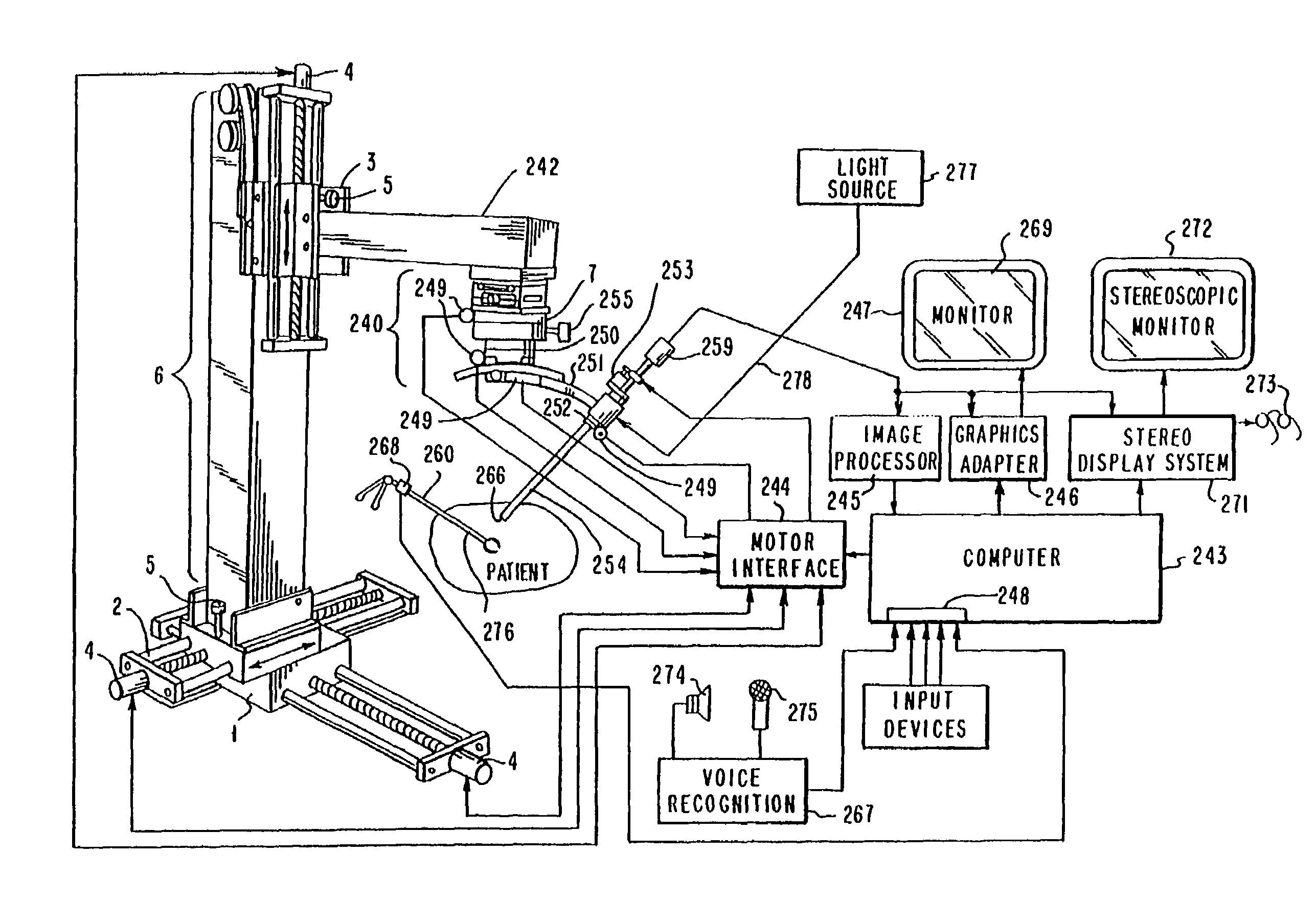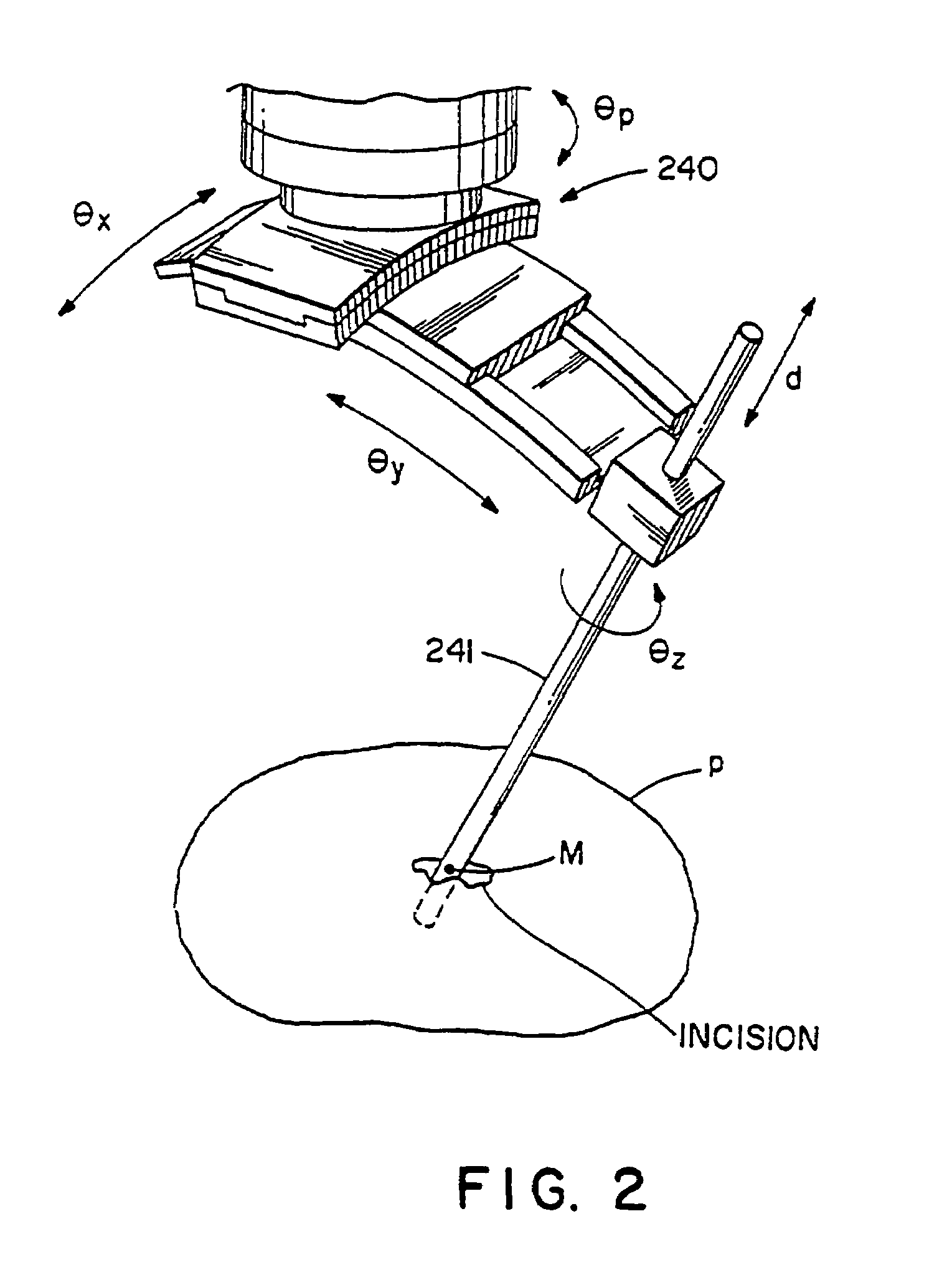System and method for augmentation of endoscopic surgery
a technology of endoscopic surgery and system, applied in the field of endoscopic surgery, can solve the problems of unsatisfactory convenience of surgeons, unresolved problems, and system does not address the problem of providing surgeons with convenient means, so as to facilitate the use of invention
- Summary
- Abstract
- Description
- Claims
- Application Information
AI Technical Summary
Benefits of technology
Problems solved by technology
Method used
Image
Examples
Embodiment Construction
[0034]Referring to FIG. 1, there is shown a schematic view of a system for use in computer augmentation of laparoscopic or similar procedures. The system generally comprises a manipulator apparatus or robot 242, a computer 243, a drive motor interface 244, a monoscopic monitor 247 with a suitable image processor 245 and graphics adaptor 246, a stereoscopic monitor 272 with suitable stereo display system 271, and a terminal 248 for connecting additional input devices to computer 243.
[0035]A manipulator similar to the manipulator 242, used in this preferred embodiment, is described in detail in the copending U.S. application Ser. No. 07 / 714,816 filed on Jun. 13, 1991.
[0036]Referring to FIGS. 1 and 2, the manipulator 242 comprises a proximal rectilinear manipulator 6 and a remote center-of-motion distal manipulator 240. The proximal manipulator 6 comprises three mutually orthogonal sliding motion sections 1, 2, and 3, which provide motion in the X, Y, and Z directions. Sections 1, 2, a...
PUM
 Login to View More
Login to View More Abstract
Description
Claims
Application Information
 Login to View More
Login to View More - R&D
- Intellectual Property
- Life Sciences
- Materials
- Tech Scout
- Unparalleled Data Quality
- Higher Quality Content
- 60% Fewer Hallucinations
Browse by: Latest US Patents, China's latest patents, Technical Efficacy Thesaurus, Application Domain, Technology Topic, Popular Technical Reports.
© 2025 PatSnap. All rights reserved.Legal|Privacy policy|Modern Slavery Act Transparency Statement|Sitemap|About US| Contact US: help@patsnap.com



